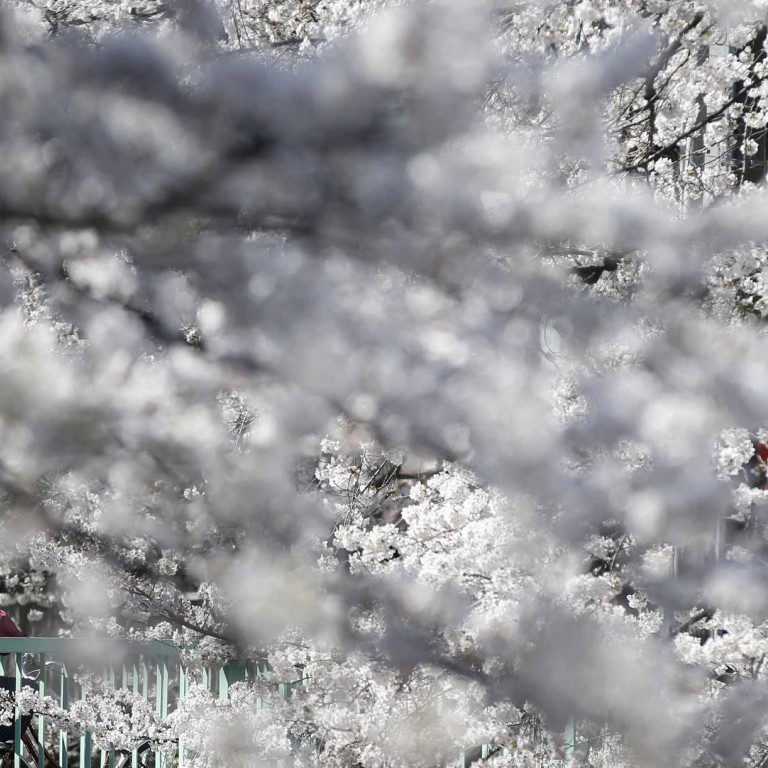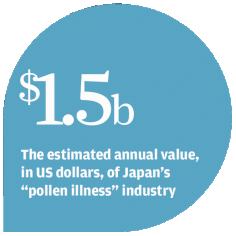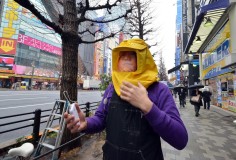
Cherry blossoms signal hay fever about to hit one in four Japanese
Spring's high pollen count triggers runny nose and sneezing in up to 25 per cent of Japanese
Spring in Japan brings explosions of pink and white cherry blossoms that provide a beautiful backdrop for picnics across this nature-loving country.

For many, the runny nose and sneezing are a minor inconvenience, but for some, the allergy to pollen causes congestion, headaches and coughing. For the unlucky few, asthma and bronchitis can follow.
According to surveys, up to one out of every four people among Japan's 128-million-population suffers from - literally "pollen illness".
Pharmacies are stacked with surgical masks to meet demand that has swelled five-fold over the last decade, alongside glasses, tissues and a bevvy of medicines.
Air purifiers, bed cleaners, pollen-absorbing sprays and trench coats that repel pollen and water are also among kafun-sho goods, a market worth an estimated US$1.5 billion annually.

Tokyo novelty electronics shop Thanko has sold the US$40 headgear "by the thousands" this year, boss Takahiro Sasaki said.
"It is really popular among people who work outdoors, such as farmers."
Rather than relatively benign cherry blossoms, by far the largest source of pollen is the swathes of man-made woodland that sprang from Japan's post-second world war programme of tree planting.
Pollen from - - an indigenous cedar-like Japanese evergreen, is held responsible for 70 per cent of pollen allergies, and is at its most rampant in March and April.
A month later, - Japanese cypress - adds to the suffering, releasing clouds of pollen.
Sugi - light, soft, fragrant and with a delicate patina - has been systematically planted as building material for centuries.
In the aftermath of the second world war, the government led a drive to plant sugi and hinoki trees to meet surging demand for fast-growing, high-quality timber.
But the 1964 liberalisation of timber imports started to squeeze domestic sugi products out of the market.
Many sugi forests were abandoned over the following decades without being logged or replanted, and, says Kimihiro Okubo of Nippon Medical School, that has led to a rise in pollen, which can travel 300 kilometres on the air.
The government for its part has been reluctant to help stop planting sugi trees or cut them down.
But it has led projects since 1999 to plant saplings of sugi varieties which produce little pollen - as little as 1 per cent of that produced by ordinary trees.
